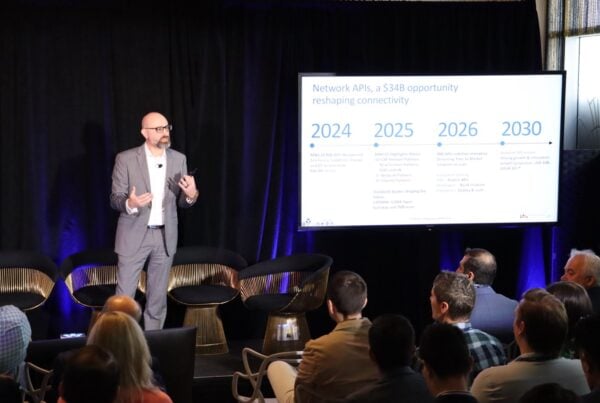When crime pays, it’s usually MNOs and wholesalers that pick up the tab. But the fraudsters don’t always win. Stakeholders in messaging are working collectively to hit back. Ahead of MEF Connects Wholesale on the 7th October, here’s a re-cap…
Business (A2P) messaging has been one of the big successes of the last 10 years. This is a commercial story we can all celebrate – a market that’s gone from fringe to mainstream in little more than a decade.
How mainstream? Well, according to Mobilesquared, 67 trillion A2P SMS messages were sent worldwide in 2017, but this will rise to 2.80 trillion in 2022 (an average of 25.1 per sub per month).
A2P has succeeded because it is direct, immediate and personal. When someone gets a text, they read it. But there’s another important factor: SMS is – for the most part – clean. Consumers trust the channel because their inboxes are not full of spam. You can’t say the same about email.
However, this is not to say that A2P messaging is blemish-free. The fraudsters never pass up the chance to exploit a popular communications channel. Inevitably they have turned their attention to A2P messaging.
MEF’s Enterprise Messaging Fraud Framework has identified 13 fraud types. https://mobileecosystemforum.com/enterprise-mobile-messaging-fraud-framework-version-2-0/. These frauds can be categorised into two groups, according to who is affected.
- Consumers and brands
Fraudsters send unwanted messages or messages that claim to be a from legitimate sender. The messsages include spam, phishing and malware.
- MNOs and intermediaries
Specialists are now developing tools that use machine learning to look for patterns that indicate whether the traffic has come from a legitimate source or from a fraudster. Industry collaboration is also essential to ensure best practice and share insights. MEF is leading this process via its Trust in Enterprise Messaging programme”
Here, fraudsters will exploit the competition to terminate messages – and the complexity of the settlement process between MNOs – to find backdoor routes for illegitimate traffic. Their methods include grey routes and global title faking, They can also use SIM farms to send A2P messages on low-cost local P2P rates. In MEF’s 2018 A2P Monetisation study, the average MNO said that fraud steals 9.4 per cent of their A2P revenue – that equalled nearly $1.5 billion that year.
There’s a more detailed description of the fraud landscape in this paper by Hot Telecom and Sandrine Dutertre, messaging security product manager at Orange International Carriers. Sandrine will be one of the speakers at the MEF Connects Wholesale virtual event.
Whatever the fraud type, everyone loses out. Why? Because of the long-term risk that consumers and businesses will lose faith in the channel.
The industry is now fighting back. MNOs have begun using SMS firewalls to scan a message to reveal its originator. This helps them to identify improperly charged grey routes and differentiate A2P from P2P SMS traffic. Firewalls have done a pretty good job of reducing common ‘faking’ fraud for example.
So now, MNOs and messaging aggregators are turning their attention to more challenging fraud types – such as identifying when traffic is coming from SIM farms. This is difficult. For instance, the traffic pattern emerging from genuine SIMs inside smart meters could, superficially, resemble the pattern issuing from a SIM farm broadcasting spam messages.
To tackle this, more nuanced traffic detection is needed. Specialists are now developing tools that use machine learning to look for patterns that indicate whether the traffic has come from a legitimate source or from a fraudster.
Of course, technical defences can only do so much. Industry collaboration is also essential to ensure best practice and share insights. MEF is leading this process via its Trust in Enterprise Messaging programme.
Meanwhile, the i3forum launched its own Messaging Fraud work group in July 2020. i3forum will host a panel session at the MEF Connects Wholesale virtual event.
Please join the conversation across two days online, where we will look at all wholesale trends across Voice, IoT, Messaging & RCS.
MEF Connects Wholesale – October 7th
MEF Connects Wholesale takes an ecosystem perspective to explore the business trends and challenges driving connectivity today and asks what will create tomorrow’s business?
Across 2-days online, we’ll look at wholesale trends across Voice, IoT, Messaging & RCS.
Hear from analysts & experts, connect with your peers to discuss what are the new rules, new channels and new partnerships that will accelerate the future of wholesale.
Register now






